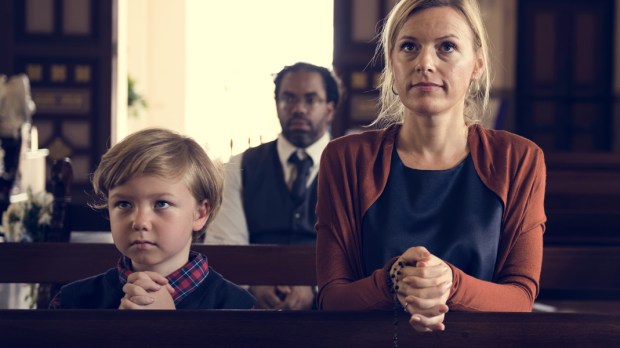Prior to the Second Vatican Council, everyone at Mass genuflected during the recitation of the Creed. This occurred not only on March 25, but also on every Sunday and major solemnity.
In the years following the Council, the Church relaxed the requirement, but still made provision for a profound bow, as well as a genuflection on two days of the liturgical calendar.
The General Instruction of the Roman Missal briefly explains this custom.
The Creed is sung or recited by the priest together with the people (cf. no. 68) with everyone standing. At the words et incarnatus est (by the power of the Holy Spirit . . . and became man) all make a profound bow; but on the solemnities of the Annunciation and of the Nativity of the Lord, all genuflect.
CCC 137
The custom of bowing at those words brings our attention to the Incarnation, showing reverence to the mystery of God taking on human flesh.
However, the Church wanted to emphasize this mystery even more on the two days of the liturgical calendar that are directed toward that historical event.
The symbolism of genuflection
Historically speaking,the act of genuflecting on one knee comes from court etiquette and was done while in the presence of a medieval king or noble. It was a sign of respect as well as a pledge of service.
Christians adopted this custom over time, and it became fully integrated into the liturgy of the Roman Rite by the 16th century. The left knee was always used to give reverence to a king and so to distinguish the Christian usage of the custom, Christians would genuflect in church on the right knee to God.
By genuflecting during the Creed, Catholics are making a physical act that touches the ground, reminding them of the reality of the Incarnation, where God “came down” and walked among us.
Genuflection is a physical reminder of a spiritual truth, awakening our soul to the words we are saying at Mass.


